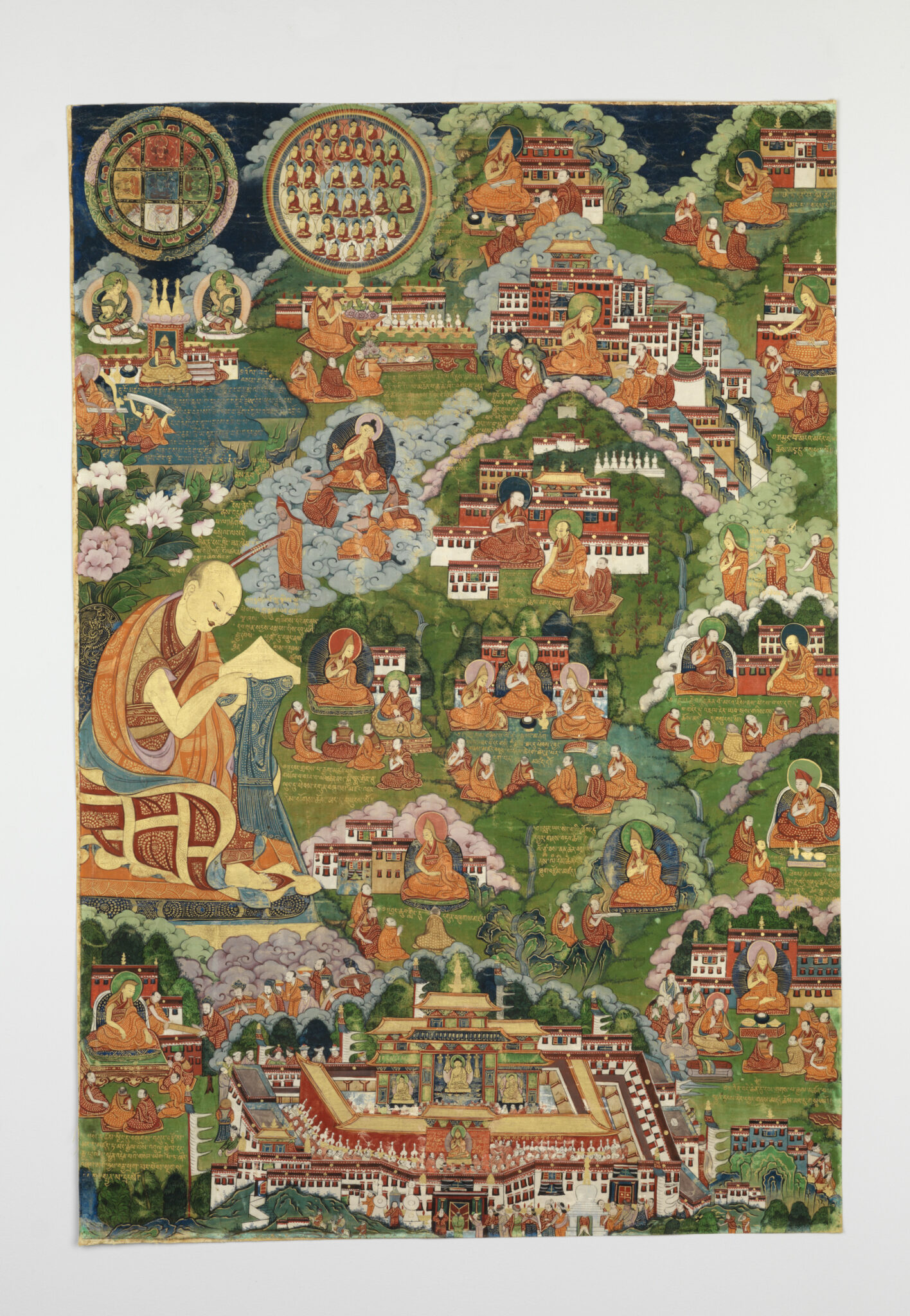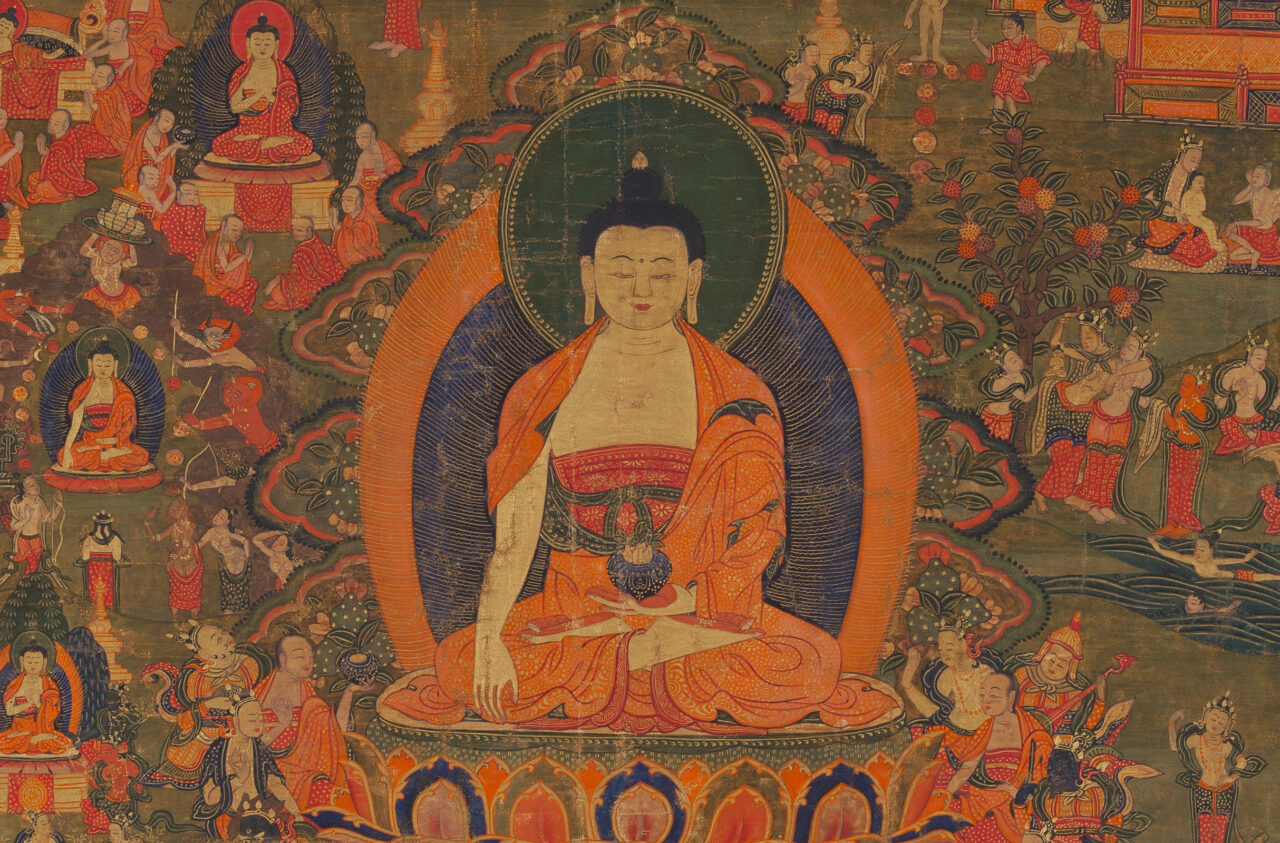Life Story of Tsongkhapa (1357–1419)
- Location
- Tibet
- Date
- 18th century
- Material
- Pigments on cloth
- Catalog Number
- C2009.2 (HAR 65845)
- Collection
- Rubin Museum of Art
- Provenance
- Purchased from the Collection of Navin Kumar, New York

This painting illustrates the life story of Tsongkapa in a different manner than the painting to the left. The main subject is shown in the left part of the painting, not the center. Several inscribed scenes are scattered within a unifying landscape but separated by clouds, trees, mountains, or valleys. The pictorial narrative closely follows known biographies of Tsongkapa and shows recorded events and places, often recognizable through their architecture; Tsongkapa’s visionary experiences at the sites; or straightforward illustrations of the events. The painting was part of a set of paintings that narrated his life’s achievements.
The largest event shown on the left is the dream Tsongkapa had while in retreat. He saw great Indian scholars, including Buddhapalita (470–540 CE), who blessed him with an Indian volume, thus confirming that Tsongkapa’s philosophical understanding was correct. He traveled widely, studied, taught, and wrote his famous treatise, The Great Presentation on the Graduate Stages of the Path. Among his other main acts was establishing the Great Prayer Festival at Jokhang, the main cathedral of Lhasa, when he made an offering of a gold crown to the main image of Buddha Shakyamuni.

Storytelling is a main means of teaching in Buddhist cultures and includes morality tales, legends, and life stories of the Buddha.
Explore theme